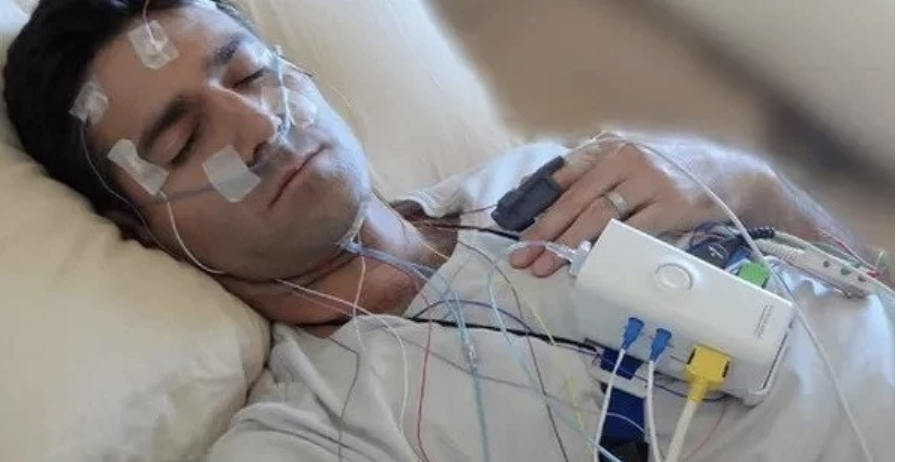

Sleep is the most crucial part of the sound functioning of the human body. If an individual fails to have a sound sleep, then they could end up having several medical complications. Individuals suffering from sleep disorders usually start to have hormonal imbalances, which could subsequently lead to mental and physical illness.
One of the most fearful sleep disorders is sleep apnea, as it is linked with pauses in breathing while sleeping. This condition could be fatal if left untreated, as breathing is quite important to life. This sleep disorder often goes undiagnosed, leaving the patient with a poor quality of life accompanied by several health issues.
To diagnose sleep apnea, the patient must undergo a sleep study, also known as polysomnography. The process involves various overnight sleep studies in a sleep lab. Some individuals can also opt for a home sleep apnea test conducted at home once the patient falls asleep. In this blog, we'll explore what sleep apnea is and its symptoms and delve into the process of diagnosing it through a sleep study.
Sleep apnea is a sleep disorder which characterizes pauses in breathing when the patient is asleep. This sleep disorder falls into three main categories: obstructive sleep apnoea (OSA), central sleep apnea, and complex sleep apnea syndrome.
OSA is the most commonly found sleep apnea, which occurs due to the excessive relaxation of the muscles that are at the back of the throat, which blocks the upper airway and thereby causes disruption in breathing. This condition prevents the patient from reaching the deeper and restorative stages of sleep, which is connected with REM sleep behavior disorder and sometimes even restless legs syndrome.
If you exhibit symptoms of sleep apnea, a sleep study (polysomnography) is typically recommended to confirm the diagnosis and assess the severity of the condition. Apart from sleep apnea, sleep studies enable doctors to diagnose other sleep disorders, such as:
Periodic limb movement disorder
Narcolepsy
Insomnia
Sleepwalking
Restless legs syndrome
REM sleep behavior disorder
If you are undergoing a sleep study, then here's what you can expect from it:
Sleep study begins with a series of consultations with a sleep specialist. In the consulting sessions, your sleep specialist will gain all the necessary knowledge regarding your sleep patterns, medical history and other relevant information related to your condition. It's important to provide accurate and detailed information to ensure an accurate diagnosis.
If the sleep specialist suspects that the case is severe, then they might recommend an in-lab sleep study. During the test, the patient needs to spend the night at a sleep center, where their sleep will be monitored using various devices. These devices will record different physiological parameters when the individual is asleep, including:
An electroencephalogram (EEG) is used to identify the different stages of sleep your brain is in. It monitors the brain's activity when the patient is asleep.
An electrooculogram (EOG) is used to recognise the sleep stage your brain is in. It also tracks eye movements to identify rapid eye movement (REM) sleep.
An electromyogram (EMG) is used to monitor the periods of muscle relaxation during sleep.
Airflow device monitors and measures breathing patterns by monitoring airflow through the nose and mouth.
Respiratory effort tracks and reads the effort exerted by the muscles involved in breathing.
Oxygen Levels sensors monitor blood oxygen levels to detect fluctuation in oxygen levels due to apneas.
In some cases, at-home sleep apnea tests might be recommended, especially for those with a high likelihood of having OSA. An at-home sleep test is a simplified version of the in-lab study. These kinds of tests usually involve wearing fewer monitoring devices. The devices are mainly sensors to measure airflow, breathing effort, and blood oxygen levels. While the home study offers convenience, it does not capture extensive data compared to an in-lab study, potentially leading to a less detailed assessment.
After the sleep study, your sleep specialist will analyse the data to determine if you have sleep apnea or not. If you do have sleep apnea, the results can also indicate the severity of it. The following factors are considered:
This index measures the number of pauses and hypopneas (partial reductions in breathing) an individual experiences in an hour. It helps to know the stage of sleep apnea. The following readings show:
Normal: AHI < 5
Mild: AHI 5-15
Moderate: AHI 15-30
Severe: AHI > 30
These results study the extent of oxygen level drops during apneas and hypopneas. It is assessed to understand the potential impact on oxygenation.
Once it is diagnosed that you have sleep apnea or not, and if you have it, then what type of sleep apnea you have, treatment options can be discussed accordingly with your sleep specialist. Some of the common treatment approaches for sleep apnea are:
If your sleep apnea is due to obesity, then your sleep specialist will recommend incorporating lifestyle changes such as weight loss, regular exercise, and adopting healthy sleep habits. All these factors can help improve sleep apnea symptoms, especially in mild cases.
CPAP is a great solution for those who have blocked airways, which causes sleep apnea. The CPAP machine treatment involves a mask connected to it that delivers a continuous flow of air to keep your airway open during sleep.
If the blockage of the airway can be treated by repositioning the jaw and tongue, then your sleep specialist might recommend using dental devices.
In some cases, sleep apnea is treatable with surgical procedures. Surgical interventions might be recommended to correct anatomical issues that contribute to sleep apnea. These issues could be enlarged tonsils. The tissue of enlarged tonsils can be surgically removed with the surgery of tonsillectomy.
To diagnose sleep apnea and to be sure that you have it, you must undergo a sleep study. It allows healthcare professionals to assess the severity of the disorder and use customised treatment options accordingly. If you suspect you have sleep apnea based on the symptoms described above, consult a sleep specialist immediately. Sleep apnea is treatable in the early stages. Also, timely diagnosis and treatment can not only improve your sleep quality but also have a positive impact on your overall health conditions.
Leave a comment